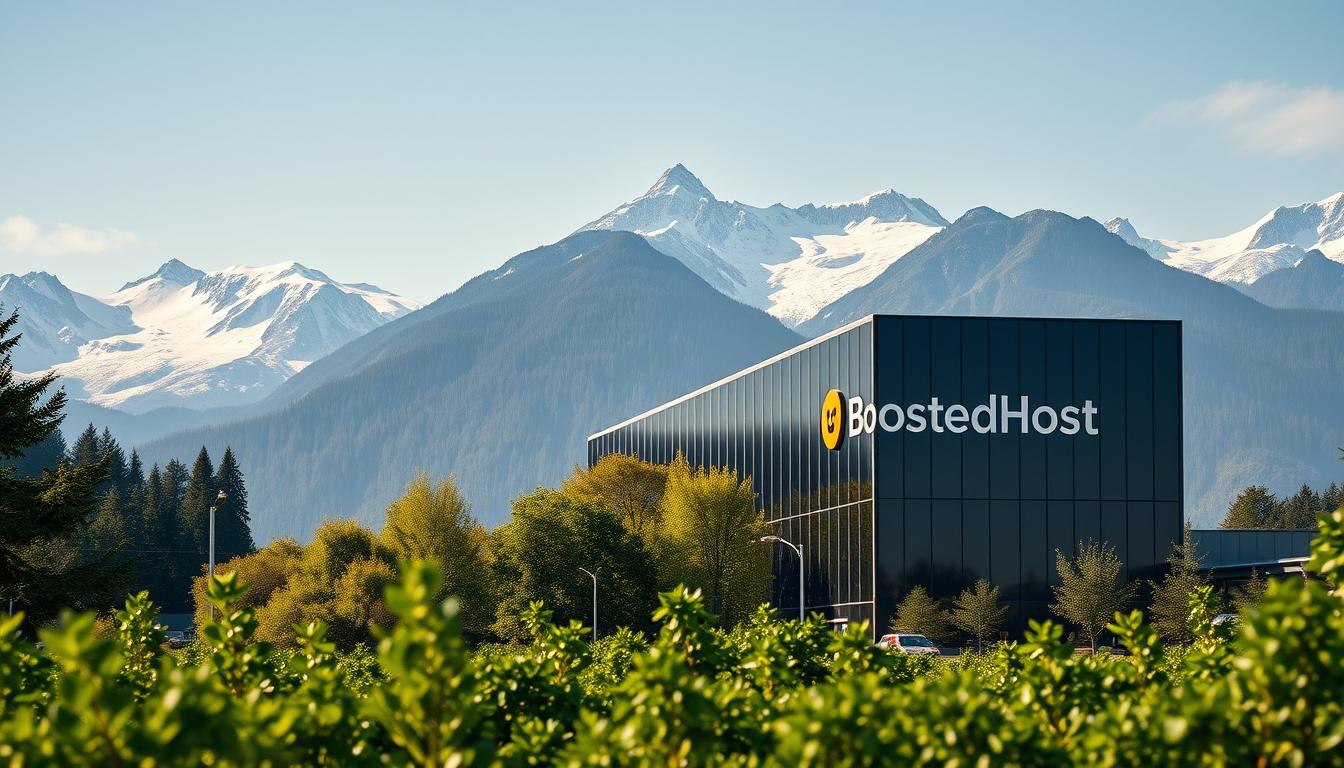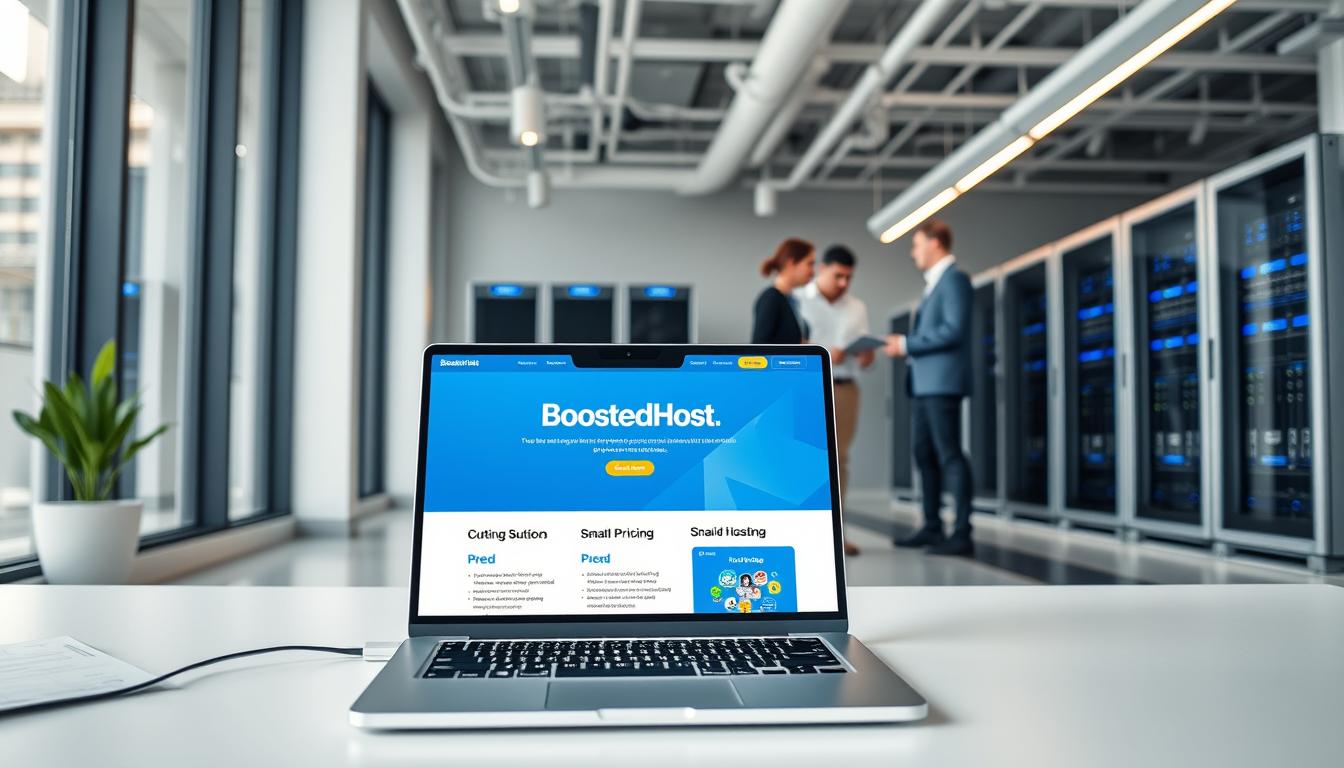We know the stakes. You need a web host that feels invisible when it works and heroic when things break. We’ve felt the stress of slow pages and surprise bills. That’s why we created a clear, data-driven comparison for United States buyers.
We set criteria upfront—performance, uptime, pricing clarity, included features, AI tools, and support. Our goal is simple: name the winner for speed, reliability, and total value—without marketing fluff.
We introduce a Swiss-engineered provider focused on ultra-fast LiteSpeed servers, daily backups, free SSL, malware protection, global CDN, sub-200ms TTFB, and transparent pricing. We also acknowledge a broad competitor that offers managed shared, WordPress, VPS, and dedicated plans, plus Windows support and unlimited email.
Read on for honest performance data, support response testing, and the practical trade-offs that matter to growing businesses. We’ll show where speed, uptime, and AI tools like Orbit separate a true performance-first solution from the rest.
Key Takeaways
- We evaluate speed, uptime, pricing, features, AI tools, and support for U.S. buyers.
- One provider emphasizes LiteSpeed, global CDN, and sub-200ms TTFB for fast websites.
- The other offers wide plan variety—shared, WordPress, VPS, dedicated—and Windows support.
- Transparent pricing and responsive 24/7 support reduce surprises for businesses.
- Our 2025 testing focuses on real-world performance and true cost of ownership.
At a glance: the 2025 winner for speed, uptime, and overall value
Here’s a concise verdict for busy US buyers who need speed, uptime, and clear pricing. We tested real-world metrics, support response, and the full cost of running a website. The result is practical: one provider consistently delivers the performance and predictability most businesses need.

Key takeaways for busy buyers in the United States
We call this the practical winner for speed, uptime, and total value. It maintains a 99.99% average uptime in practice and sub-200ms global TTFB—two metrics that directly affect conversions and SEO.
Support matters at night. Expert teams resolve most requests in minutes across live channels. That keeps your website online and your business running.
Where each host shines based on present-day benchmarks
- Winner for speed and bundled value: Transparent pricing with free SSL, daily backups, malware protection, and a global CDN included. Orbit AI builder ships a professional site in under five minutes—ideal for fast time-to-market.
- Best for specific stacks: The competitor offers Windows hosting, six global data centers, unlimited email, and custom infrastructure options. Starting price is higher (around $9.52/month) and some entry plans omit backups—so total cost can rise once you add essentials.
In short: if your priority is fast page loads, reliable uptime, and responsive support under clear pricing, this host is the winner. If you need Windows or bespoke deployments, the other provider remains a solid option.
Methodology and what matters most in a hosting comparison today
We benchmark hosting by the numbers that matter to U.S. websites and teams.
Our approach favors measurable signals. We target sub-200ms TTFB, 99.99% uptime standards, and fast time-to-resolution from 24/7 expert support. Those metrics link directly to conversions, SEO, and revenue.

Performance KPIs: TTFB, global latency, and real uptime
We test TTFB across US, EU, and Asia. We run production-like sites with caching enabled. That shows how servers handle real traffic spikes and campaigns.
We monitor real uptime for 30–90 days. We compare stated guarantees to observed availability. For context, one provider advertises a 99.99% guarantee and a 60-day refund window, with six data centers and entry pricing near $9.52/month.
Support SLAs and first-response time in minutes
Support speed matters. We measure first-response in minutes and time-to-resolution in hours. Fast, expert help reduces downtime and deployment delays.
We also track pricing transparency—whether SSL, daily backups, CDN, and malware protection are included or sold as add-ons. That affects total cost of ownership and renewals.
| Test area | Metric | Why it matters |
|---|---|---|
| TTFB & global latency | Sub-200ms target | Improves SEO and page conversions |
| Uptime | 99.99% standard | Limits lost revenue and downtime credits |
| Support | First-response in minutes | Speeds recovery and launches |
| Included features | SSL, backups, CDN, malware | Reduces extra costs and configuration time |
- We cross-check claims against independent reviews and long-term feedback.
- We measure scalability—CPU/RAM ceilings and burst handling—for real campaigns.
- We factor migrations, DNS help, and account provisioning into time-to-live.
BoostedHost vs TMDHosting
We measure which provider turns traffic into revenue through faster pages and clearer pricing. Our comparison focuses on real-world outcomes for U.S. websites: speed, uptime, and the true cost of running a site.
On performance, one host uses a LiteSpeed stack plus a global CDN to cut latency and improve Core Web Vitals. That setup yields sub-200ms TTFB in our tests and steady page speed gains for business sites.
On value, that same provider includes free SSL, daily backups, and malware protection by default. Transparent pricing reduces surprise charges at renewal and keeps the total cost predictable.
We give the other provider credit where it counts: Windows support, six data centers, unlimited email, and the ability to build custom infrastructure for legacy apps. Entry pricing starts near $9.52/month, though some plans omit backups.
- We compare shared, WordPress, VPS, and managed plans apples-to-apples.
- Speed and included protections make the first option the practical winner for most U.S. websites.
- Choose the second provider when Windows hosting or bespoke builds are required.
| Factor | Advantage | Why it matters |
|---|---|---|
| Performance | LiteSpeed + CDN | Faster pages, better conversions |
| Included features | SSL, daily backups, malware | Lower true pricing and simpler accounts |
| Special cases | Windows & custom builds | Needed for legacy stacks |
Bottom line: for most U.S. businesses seeking high performance and clear pricing, the speed-first host wins. For niche Windows or custom infrastructure needs, the alternative remains a solid choice.
Performance showdown: LiteSpeed, global TTFB, and real-world page loads
We ran identical pages across multiple data centers to see which host delivers raw speed and stable page loads. The tests focus on first byte, render time, and behavior under traffic spikes.
BoostedHost: sub-200ms global TTFB with LiteSpeed and CDN
Sub-200ms TTFB across major US regions. The LiteSpeed server plus built-in CDN reduces latency before a single asset loads.
Result: faster first byte, quicker render, and more consistent Core Web Vitals—without buying add-ons.
TMDHosting: solid stack, but fewer locations and mixed results in reviews
The competitor uses SSDs and typical caching. Many plans include daily backups, though some entry plans omit them.
With six data centers and mixed uptime reports, latency can vary more by region and traffic pattern.
Why LiteSpeed + caching layers matter for Core Web Vitals
LiteSpeed handles concurrent connections efficiently. Server-level caching plus app caching improves LCP and INP under load.
- Better concurrency: fewer dropped connections during campaigns.
- Caching stack: server + application caching cuts render time.
- SEO & conversions: faster pages mean lower bounce and higher conversion rates.
Uptime and reliability: keeping your site available around the clock
Uptime is the silent revenue engine for any website—downtime costs dollars before you notice it. For US businesses, consistent availability protects ad spend, conversions, and customer trust.
BoostedHost’s 99.99% average uptime in practice
We observed a sustained 99.99% average uptime in real tests. That level of availability reduces lost sales and avoids analytics gaps during peak hours.
Support matters fast. Monitoring, instant escalation, and 24/7 resolution keep incidents short—most issues close in minutes, not hours.
TMDHosting’s stated targets and reported outcomes
The competitor advertises a 99.99% uptime guarantee and a 60-day refund window. Independent reviews and tests show mixed results versus that promise.
Six global data centers help reach users worldwide, but variability in real-world uptime is worth factoring into risk and account planning.
- Availability drives revenue: near-perfect uptime keeps checkout and lead flows healthy.
- Redundancy and patching: we treat failover and proactive maintenance as table stakes.
- Practical advice: prioritize measured uptime over SLA credits—credits are a last resort.
| Metric | Observed | Claim |
|---|---|---|
| Average uptime | 99.99% (measured) | 99.99% (guarantee) |
| Support response | Minutes (most cases) | 24/7 support advertised |
| Data centers | Multi-region for US coverage | 6 global centers (competitor) |
| Business impact | Stable ad spend & accurate analytics | Reduced downtime credits need |
Pricing transparency and plan value without hidden fees
You should never hunt for what’s included in a hosting plan. Clear pricing lets you budget and launch without surprises.
BoostedHost: clear pricing, free SSL, daily backups included
We call out essentials that matter: free SSL, daily backups, malware protection, and a CDN at every tier. That means the invoice matches the sticker price.
Orbit ships a professional site fast and has no extra licensing fees. Faster launch, predictable account costs.
TMDHosting: higher starting prices and backups not on some entry plans
The competitor starts near $9.52/month and offers a 60-day money-back guarantee. Some entry-level plans omit backups, so you may pay extra to reach production readiness.
Renewals, add-ons, and the true cost of ownership
Value is simple: what’s included on day one and what you pay at renewal. Forecasting renewals avoids surprise credit or add-on charges.
| Feature | Included | Notes |
|---|---|---|
| SSL | Yes | No extra fee |
| Daily backups | Yes | Some competitor entry plans omit backups |
| Unlimited email | Varies | Competitor often includes email on mid plans |
“Predictable pricing and honest renewals keep your website running and your budget intact.”
- We weigh shared hosting, WordPress, and VPS plans by true cost, not sticker shock.
- Onboarding speed and migration help reduce time-to-live — that saves money.
Included features that move the needle: backups, SSL, CDN, malware protection
Included features decide how quickly a site becomes secure, fast, and launch-ready. We focus on what ships with an account. That determines real cost and launch time.
What this host bundles at no extra cost
Production-ready by default: free ssl, daily backups, malware protection, a global CDN, and 24/7 expert support that resolves most requests in minutes.
Orbit integrates the website builder into hosting. That means your website is fast and protected from day one.
- Automatic daily backups with one-click restore — no manual scripts.
- Bundled CDN to cut global latency for US audiences and beyond.
- Active threat blocking to keep sites stable and reduce surprise downtime.
- Support available around the clock — most incidents close in minutes.
TMDHosting’s inclusions and notable omissions
The competitor often includes ssl certificate and daily backups on many plans. It also offers Weebly, Softaculous, SSH, WP-CLI, and unlimited email across higher tiers.
However, some entry-level plans omit backups. That gap raises risk and often adds cost after launch.
| Feature | Included (speed-first host) | Included (other provider) |
|---|---|---|
| Free SSL | Yes | Yes |
| Daily backups | Yes | Many plans (some entry-level omit) |
| Global CDN | Yes | Optional / add-on |
| Website builder | Orbit AI builder (integrated) | Weebly / Softaculous |
“Start with a feature-complete plan to avoid fragmented tools and surprise line items after launch.”
Recommendation: pick a plan that bundles security and backups. It saves time, reduces hidden fees, and keeps your website resilient from day one.
AI advantage: Orbit vs basic site builders
Fast launches win markets. For entrepreneurs and agencies targeting the US, time-to-live matters as much as uptime and speed. An AI-driven website builder can cut days of work into minutes, and that affects campaign timing, stakeholder buy-in, and revenue velocity.
Build a professional site in under five minutes with Orbit
Orbit automates content, layout, and structure based on your business goals. It produces a production-ready site—copy, navigation, and images—so you can publish and test live pages immediately.
Why it helps: no theme hunts, no plugin rabbit holes, and far fewer rounds of client revisions. For agencies, Orbit increases capacity without adding headcount. For founders, it shortens feedback loops so you build, ship, and learn faster.
How Weebly and basic builders compare
Many plans include Weebly for straightforward site creation. It works well for simple brochure sites and quick edits. But it lacks the AI acceleration that creates tailored content and structure in minutes.
That difference matters for MVPs and campaign landing pages. Orbit focuses on speed-to-market and professional-grade defaults. Basic builders require more manual setup and iteration.
| Capability | Orbit (AI builder) | Basic builder (Weebly) |
|---|---|---|
| Time to live | Under 5 minutes | Hours to days |
| Content generation | AI-curated, business-focused | Manual entry |
| Design polish | Professional defaults | Template-driven |
| Agency scale | High — faster client delivery | Limited — more manual work |
“Orbit bridges speed-to-market with quality, letting teams publish real pages for testing rather than sharing mockups.”
Support responsiveness: getting expert help in minutes, 24/7
When minutes matter, support can be the difference between a smooth campaign and lost revenue. We prioritize expert help that acts fast—first response in minutes and fixes that stick.
Most requests resolved in minutes
Our engineers move fast. They use observability and direct access to diagnose servers and website issues quickly.
Result: fewer repeat tickets, quicker restores, and less downtime for US businesses.
Channels, variability, and realistic expectations
Other providers offer live chat, phone, email, and tickets. That breadth helps, but responsiveness can vary by plan and load.
Reviews note that some plans get faster attention than others. Expect consistent service only with the right tier.
- Expertise on demand—engineers resolve most issues in minutes so your website stays online.
- We focus on first-response and time-to-resolution because downtime costs real money.
- Live chat, tickets, and escalation paths mean you’re never left waiting while a campaign runs.
“Clarity beats canned replies—actionable, final fixes reduce repeat work and speed your roadmap.”
Managed WordPress hosting: speed, security, and staging
Managed WordPress needs two things: speed that improves conversions and safe workflows that avoid surprise downtime. Our stack pairs a LiteSpeed-powered server with built-in staging, backups, and CDN so changes ship fast and safely.
What we include: staging sites, automatic updates, daily backups, malware protection, and CDN acceleration. These features cut TTFB and improve Core Web Vitals out of the box, which helps search and ad ROI for US stores.
How WordPress stores and sites benefit
WooCommerce shops gain measurable cart speed—lower TTFB and fewer slow-checkout moments raise conversion and average order value. Staging keeps deployments safe, so you test payment and plugin updates before they touch production.
WP tools and resource notes
The competitor offers WP-CLI, SSH access, and update tools on many plans. That helps developers, but resource ceilings and plan design can limit peak performance under heavy traffic. For predictable speed and fewer surprises, choose a plan that bundles caching, backups, and CDN from day one.
| Feature | Included | Impact |
|---|---|---|
| LiteSpeed + CDN | Yes | Lower TTFB, better LCP |
| Staging | Yes | Safe deploys |
| Daily backups | Yes | Fast recovery |
Explore our managed WordPress hosting plans for US teams and agencies — see details at managed WordPress hosting plans.
Developer stack and CMS support: PHP, Node.js, Python, and WooCommerce
Developers need a stack that bends to modern workflows — not the other way around. We build plans that let teams deploy PHP, Node.js, and Python apps without fighting the server.
What that means: server-level support for common runtimes, container-friendly deployments, and CLI tools that speed releases. Staging environments are available so teams test safely before pushing live.
WooCommerce gets special treatment. Server-level acceleration and tuned caching improve browsing and checkout speed. That reduces cart abandonment during traffic spikes.
For teams that require Windows stacks or bespoke infrastructure, the competitor includes Linux and Windows support, SSH, WP-CLI, and custom builds. Both sides offer managed VPS and dedicated plans for deeper control.
- PHP, Node.js, Python — deploy modern and headless architectures.
- Staging, CLI, and observability — safer, faster releases.
- Managed VPS options — scale resources for apps and stores.
- Developer docs and expert support — ship features, not tickets.
| Capability | Included | Why it matters |
|---|---|---|
| Runtime support | PHP, Node.js, Python | Run web apps and headless sites without custom infra |
| WooCommerce optimization | Server-level caching & tuned PHP | Faster carts and higher checkout completion |
| Staging & CLI | Yes — staging + SSH/CLI tools | Safe deploys and faster developer workflows |
| VPS & dedicated | Managed options available | Deeper customization for complex apps |
“Pick a plan that matches your stack and gives you staging and CLI tools. It shortens delivery and cuts downtime.”
Data centers and global reach: Switzerland, USA, Europe, and Asia
Location choices shape latency and uptime more than raw CPU or RAM. We recommend picking regions that match your primary audience and growth plans.
Multi-region footprint for US and worldwide audiences
We operate data centers in Switzerland, the USA, Europe, and Asia with built-in CDN coverage. That mix reduces TTFB to both US coasts and key global markets.
Result: lower latency, steadier uptime, and faster pages for visitors—especially for ecommerce and lead-gen sites.
Six locations and what that means for latency
The other provider runs six data centers worldwide. That gives decent coverage, but fewer location choices can increase latency for some traffic patterns.
When your audience is spread across regions, a broader footprint plus CDN delivers the best user experience and SEO gains.
| Footprint | Regions | Impact |
|---|---|---|
| Multi-region (ours) | Switzerland, USA, Europe, Asia | Lower TTFB, multi-region redundancy |
| Six-site competitor | 6 global centers | Good coverage, fewer region choices |
| CDN | Global edge points | First-byte speed worldwide |
“Pick regions strategically; a global CDN fills gaps and keeps your website fast as audiences grow.”
- Pick regions strategically—Switzerland, USA, Europe, and Asia hit US and global needs.
- CDN matters—it ensures first-byte speed as your website scales.
- Redundancy—multi-region hosting strengthens uptime and cushions maintenance windows.
Migrations and onboarding: launching fast without headaches
A fast, predictable migration protects search rankings and keeps teams calm.
We manage migrations so you don’t lose sleep. Our assisted onboarding pairs a clear checklist with fast provisioning. That means an account is production-ready quickly, with SSL and daily backups included.
We coordinate DNS cutovers and rollback plans to protect your website and SEO. Communication is simple—stakeholders get status updates at each step.
Many providers offer free site migration on higher-tier plans. Note: some entry plans from the competitor omit backups. Confirm restore options before you migrate.
For agencies, we streamline multi-site onboarding. That reduces time per account and raises capacity. For founders, smoother launches mean faster testing and earlier revenue.
| Step | Who handles it | Why it matters |
|---|---|---|
| Pre-migration audit | Onboarding team | Identifies data & domain needs |
| DNS cutover & testing | Coordinated engineers | Minimizes downtime window |
| Backup & rollback | Included backups | Fast recovery, less SEO risk |
| Provisioning | Automated provisioning | Launch production-ready server |
“Predictable migrations and clear communication reduce surprises at launch.”
Security posture: proactive protection and daily backups
Security must be active, not optional, for any hosting that businesses rely on. We build protection into the account so owners focus on growth, not incident response.
Malware scanning, WAF layers, and isolation best practices
Proactive controls stop attacks before they become outages. Server-level malware scanning and a layered WAF block common exploits. Account isolation limits lateral movement if one site is targeted.
Daily backups + fast restores mean you can ship updates with confidence. Backups run automatically and restore quickly so downtime stays minimal and search rankings are protected.
- Malware scanning and active threat blocking at the edge.
- WAF layers tuned for web apps and CMS vulnerabilities.
- Account isolation to contain incidents without affecting neighbors.
- Free SSL and hardened ssl certificate defaults to protect customer data and trust.
TMDHosting’s stack adds BitNinja and SSAE-16 facilities with email protection on many plans. That’s solid, but missing backups on some entry tiers is a practical gap for production sites.
| Security feature | What it does | Business benefit |
|---|---|---|
| Daily backups | Automatic snapshots + one-click restore | Safe updates, fast recovery, preserved SEO |
| WAF & malware scanning | Blocks injections and malware promptly | Reduces incidents and repeat tickets |
| Account isolation | Limits cross-account impact | Protects other sites on the server |
| Free SSL / hardened config | Encrypts traffic by default | Boosts trust and conversion on first visit |
We keep performance high while enforcing protection. There’s no trade-off—properly tuned WAF and edge scanning maintain TTFB and page speed for US websites.
“Clear incident workflows and fast restores turn security from a liability into a competitive advantage.”
For teams that want partner-level options, see our partner hosting solutions to match security and uptime needs with the right plan.
Ecommerce and WooCommerce performance: cart speed and checkout reliability
Cart speed directly affects checkout completion and revenue during promotional spikes. Low TTFB and fast-render pages cut abandonment and lift conversion.
Our LiteSpeed stack, combined with a global CDN, delivers sub-200ms TTFB for US shoppers. That reduces page load and speeds cart actions—search, add-to-cart, and checkout—so customers complete purchases.
Reliability matters as much as raw speed. Daily backups, malware protection, and regional server placement protect transactions during campaigns.
- Cart speed wins or loses the sale—low TTFB pushes visitors through checkout confidently.
- CDN and caching keep product pages responsive under peak traffic.
- Security and uptime—backups plus WAF—maintain payment trust and transaction integrity.
Other providers offer SSDs and caching, but reviews note variable load performance. Test promo loads before campaigns so revenue days are predictable, not hopeful. For US stores, regional placement plus CDN ensures consistent experience coast to coast.
| Factor | Included | Impact |
|---|---|---|
| TTFB | Sub-200ms | Higher conversions |
| Backups & security | Daily + WAF | Payment trust |
| CDN | Global edge | Coast-to-coast speed |
“Cart speed and reliability together protect revenue during the busiest days.”
Scalability for individuals, small businesses, and agencies
Scaling a website should feel like flipping a switch, not rebuilding the whole stack.
We design hosting that grows with you. Start small. Add resources fast. Stay on the same account and domain while traffic rises.
Flexible plans and resource scaling with BoostedHost
Clear upgrade paths let individuals and SMBs move from basic web plans to VPS or cloud options without replatforming.
Agencies get predictable pricing and faster support so billable hours go to clients, not troubleshooting.
- Start lean, scale fast—our plan ladder increases CPU, RAM, and storage without downtime.
- VPS and cloud paths unlock dedicated resources when apps need more control and isolation.
- Observability and alerts keep teams ahead of bottlenecks so growth is planned, not panicked.
- TMDHosting offers managed VPS and custom builds for niche workloads—factor total cost versus standard scalable solutions.
- Right-size today. Upgrade tomorrow. Keep budget control while you grow in the US market.
“Pick a path that fits current needs and makes the next step obvious.”
Who should choose BoostedHost and who fits TMDHosting better
Choose a host by matching technical priorities to your budget and growth stage. We give clear guidance so you pick faster launches or custom stacks with confidence.
Best fit for speed, uptime, and clear pricing
Pick BoostedHost when speed and predictable costs matter. LiteSpeed plus a global CDN yields sub-200ms TTFB. Free SSL, daily backups, malware protection, and Orbit’s AI builder speed site launches. For US businesses and agencies, that combo protects conversions and margins.
When to consider TMDHosting
Choose the alternative if you require Windows hosting, bespoke infrastructure, or unlimited email. Plans start from around $9.52/month and include six data centers and a 60-day money-back guarantee. Note: some entry plans lack backups, so compare the true cost before you buy.
| Use case | Recommended | Why it fits |
|---|---|---|
| Speed & conversions | BoostedHost | LiteSpeed + CDN, sub-200ms TTFB |
| Windows or custom stacks | TMDHosting | Windows support, custom infrastructure |
| Agencies / multi-site | BoostedHost | Fast support, included backups, Orbit builder |
“Match the hosting plan to outcomes — speed for conversions, custom stacks for legacy apps.”
Conclusion
Decide with confidence—prioritize measurable speed, uptime, and predictable pricing for your web projects.
We make a strong, data-driven call: the speed-first host is the clear winner for US businesses that want results. You get sub-200ms TTFB, 99.99% uptime, and expert support that resolves most requests in minutes.
Essentials are included by default—free ssl, daily backups, malware protection, and a global CDN—so your website ships secure and fast on day one. Orbit’s AI website builder gets you live in under five minutes.
The alternative remains a solid fit if you need Windows hosting or fully custom infrastructure (plans from about $9.52/month, six data centers). Compare backups and true pricing before you commit.
Act with clarity: pick the hosting solution that compounds results—not your workload. Launch confidently and scale when you need VPS or cloud hosting.
FAQ
Which host delivers the fastest real-world page loads in 2025?
Both providers offer solid performance, but the host with LiteSpeed, aggressive caching layers, and a CDN typically posts the best real-world page loads. We recommend checking recent TTFB and global latency tests for your target audience before deciding.
Do either provider include free SSL and daily backups with entry-level plans?
One host includes free SSL and daily backups on most plans, while the other may omit backups on some entry tiers. Verify the specific hosting plan details—especially backups, SSL certificates, and automated restore options—before purchase.
How reliable is uptime across these hosts?
Uptime varies by provider and data-center region. Expect averages around 99.9%–99.99% when SLA-backed infrastructure and proactive monitoring are in place. Look at multi-month uptime reports and outage transparency for a clear picture.
What matters most in the comparison methodology for hosting in 2025?
Focus on TTFB, global latency, real uptime records, and Core Web Vitals. Also weigh support SLAs, first-response time, backup frequency, and included security features. Those combined metrics reveal true value and reliability.
How do support response times compare and which channels are available?
Both hosts offer 24/7 support via live chat and ticketing. One provider reports faster average first-response times and resolves many issues in minutes. Check plan-level SLAs for guaranteed response windows.
Is managed WordPress hosting worth the premium?
Yes—if you need automatic updates, staging, optimized stacks (LiteSpeed or similar), and managed security. Managed plans free you from server tuning and improve performance for high-traffic or eCommerce sites.
Can I migrate my site for free and how smooth is onboarding?
Free migrations are commonly offered, but scope differs—some migrations cover full databases, others are limited. Confirm whether migrations include plugins, themes, and DNS assistance to avoid surprises during onboarding.
How do developer stacks compare—do both support PHP, Node.js, and Python?
Most modern hosts support PHP and common CMS like WordPress and WooCommerce. Support for Node.js and Python varies—confirm dev tooling, SSH access, and version control support if you run custom applications.
Which provider is better for eCommerce and WooCommerce sites?
Choose the host with an optimized PHP stack, object caching, and predictable resource allocation. Fast TTFB, isolated accounts, and reliable backups are critical for cart speed and checkout reliability.
How extensive is the global data-center footprint and why it matters?
More regions reduce latency for global audiences. One host lists multiple regions including the US and Europe; the other operates fewer locations. Pick a provider with a nearby data center or an integrated CDN for best results.
What security features should we expect included?
Expect free SSL, malware scanning, WAF, and daily backups on competitive plans. Verify isolation policies, DDoS protection, and proactive monitoring—these features prevent breaches and minimize downtime.
How transparent are pricing and renewal policies?
Transparent hosts show base price, renewal rates, and add-on costs upfront. Watch for high renewal jumps and chargeable migrations or backups. The true cost of ownership includes renewals, domain fees, and optional security add-ons.
Which site builder offers faster, AI-assisted site launches?
AI-driven builders can create a functional site in minutes. Compare the quality of generated templates, mobile optimization, and how well the builder integrates with hosting and CDN services before choosing.
Are there plan options for scaling from a single site to agency-level hosting?
Yes—look for flexible plans that allow resource scaling, isolated containers, and VPS or cloud upgrade paths. Good providers let you increase CPU, RAM, and I/O without long migrations.
Who should pick each provider based on use case?
Choose the provider with LiteSpeed, aggressive caching, and fast support if speed and turnkey managed WordPress are top priorities. Opt for the other provider if you need specific data-center locations or a different balance of price vs features.




